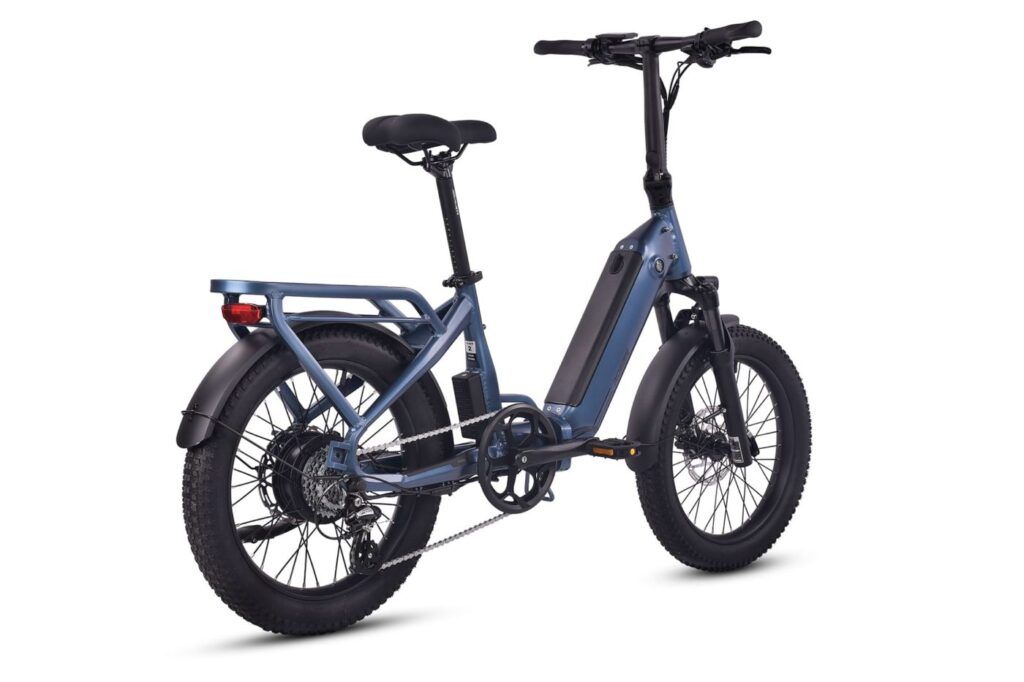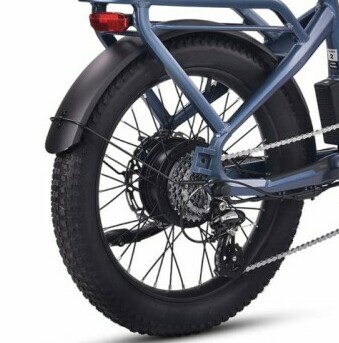Electric bikes are changing the way we look at travel. With an electric drive system, rides become less about exertion and more about enjoying the journey. But what’s at the heart of this transformation? It’s the motor, and knowing whether a mid-drive or a hub-drive motor suits your needs better can make all the difference.
Consider mid-drive and hub-drive systems as the two main contenders of electric bike technology. Each comes with its set of benefits, appealing to different types of riders. Whether you are new to the e-bike scene or considering an upgrade, understanding these systems is crucial.
E-bikes are gaining traction for good reasons. They offer an environmentally friendlier alternative to cars and public transport, potentially reducing carbon footprints one ride at a time. So it’s important for us to grasp the pros and cons of the two popular motor placements: mid-drive—set centrally on the bike—and hub-drive—located in the wheel hub.
The Mechanics of Mid-Drive Motors
I’m here to give you a clear understanding of mid-drive motors. These are the heart of an electric bike, located centrally at the bike’s cranks. This position matters because it allows the motor’s power to work through the bike’s gears, much like the engine of a car.
Now, why would you consider a mid-drive motor for your ride? One significant advantage is balance. The central placement of the motor ensures an even weight distribution. This not only feels natural while riding but also improves handling, especially on uneven terrain.
And if you love to take on hills, mid-drive motors are your ally. They leverage the bike’s gear system, offering more efficient use of power. You’ll notice that pedaling up an incline feels easier, giving you that extra push when you need it most. Mid-drive motors are generally better for hills, rugged terrain and performance.
But it’s not all smooth riding. Mid-drive motors are typically more expensive. They can be a hit to your wallet not just at purchase but also when it’s time for maintenance or repairs. Their integration with the drive train means you’ll probably need a specialist, rather than a routine bike shop, to handle any hiccups.
Moreover, if you’re one to enjoy a peaceful ride, consider this: mid-drive systems can be noisier than their hub-drive counterparts. This sound might be negligible for some, but if silence is golden for you, it’s something to keep in mind.

Understanding Hub-Drive Motors
Now, let’s walk through the specifics of hub-drive motors. With this configuration, the motor is situated on either the front or rear hub, sitting right at the center of the wheel. This design keeps the motor separate from the bike’s gears, quite different from mid-drive motors.
One of the biggest advantages of hub-drive motors is that they’re usually more affordable, making them great entry points for those new to electric bikes. Plus, they’re pretty straightforward to install or replace, which supports a DIY approach if you’re handy.
Hub-drive motors also shine in terms of simplicity. Since there are fewer moving parts than in mid-drive systems, maintenance is usually manageable. That’s a huge plus for anyone not wanting to tangle with complex technological mechanisms.
However, hub-driven e-bikes do come with some challenges. The most noticeable is the impact on weight distribution due to the motor’s position in the wheel. It can lead to a less balanced ride, with either the front or the rear being heavier. This is especially noticeable if you’re carrying loads.
With these considerations, many riders find hub-drive bikes perfectly suited to their daily commutes and leisurely rides. In urban settings where the routes are generally flatter, the limitations of hub-drive systems are less pronounced, offering a smooth and efficient ride without breaking the bank. Since the motor is situated right on the wheel, the power surge is noticeable right away.
Comparing Mid-Drive and Hub-Drive: Making the Right Choice
When you’re standing in the shop, or scrolling endlessly online, faced with the choice between a mid-drive or hub-drive electric bike, the decision may seem daunting. But equipped with the facts you now have, the choice becomes a matter of matching your needs to the right bike.
If you prioritize smooth, natural riding dynamics and plan to tackle varied terrain, especially steep hills, a mid-drive motor excels in providing that experience. Remember though, this technology comes at a higher cost, both upfront and for any potential repairs.
On the other hand, if your travel involves mostly flat roads and you’re looking for an e-bike that’s simpler and more cost-effective to maintain, a hub-drive system might be the way to go. It offers a straightforward design and is usually easier on the wallet, both when buying and throughout its life.
Consider your daily journey, the level of investment you’re comfortable with, and how you planyour e-bike. Are you a casual commuter or an avid trail explorer? Your answer will guide you towards the best choice.
To sum up, there’s no one-size-fits-all answer in the mid-drive versus hub-drive debate. It’s about making an INFORMED DECISION that aligns with your cycling habits, budget, and overall expectations from an electric bike. Whichever route you take, you’re making an environmentally conscious choice that’s good for you, and great for the planet too.
Hub-drive vs Mid-drive Motors
| Feature | Hub-Drive Motor | Mid-Drive Motor |
| Location | In the front or rear wheel | Near the pedals (replaces crankset) |
| Power Delivery | Direct to the wheel | Through the drivetrain |
| Gears | Limited (single-speed or internal gear hubs) | Works with existing derailleur system (wider range) |
| Maintenance | Easier | May require more specialized tools |
| Price | Generally more affordable | Often pricier |
| Riding Experience | Simpler, good for flat terrain | More natural, better for hills and performance |


